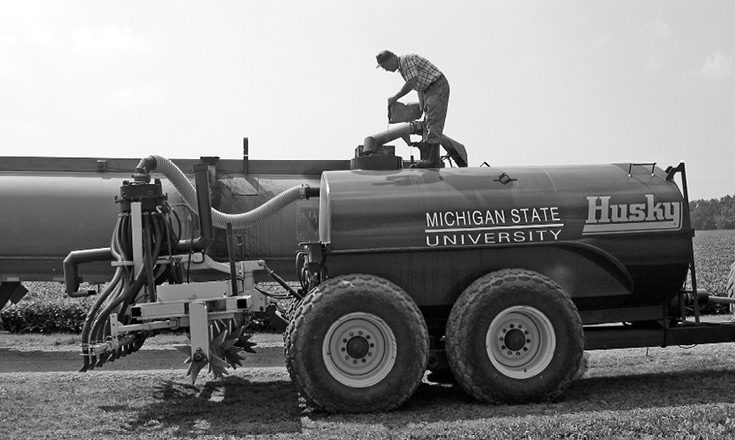No-Till Farmer
Get full access NOW to the most comprehensive, powerful and easy-to-use online resource for no-tillage practices. Just one good idea will pay for your subscription hundreds of times over.

No-tillers who must apply manure late in the summer and also want to drill cover crops face a conflict. When storage nears capacity, manure must be applied to fields. But timely seeding of cover crops is crucial to establishing stands.
“We were always told that you couldn’t put manure and cover-crop seeds together because they wouldn’t grow or wouldn’t germinate,” says Dale Mutch, cover-crop specialist.
But research at Michigan State University proved seeding cover crops with liquid manure can work, says Mutch, who has been studying this practice for 7 years.
“Cover crops provide clear benefits to no-tillers,” says Mutch, who spoke at last year’s National No-Tillage Conference in Des Moines. “We’re going to increase water-holding capacity, improve aggregate stability and water infiltration, decrease evaporation and improve soil bulk density.”
One study with cover crops in manure slurry compared the establishment and biomass yield of oilseed radishes and Oriental mustard. This study was done during the hot, dry summer of 2005 that stressed crops, Mutch says.
Researchers seeded cover crops into winter-wheat stubble.
They attached an AerWay rolling-tine aerator on the rear of a liquid-manure tanker. The aerator poked holes ½ to 1 inch deep in the ground. The slurry with the seeds traveled through a rotating chopper-distributor and drop tubes and then into soil fractured by the rotating tines.
Manure slurry containing cover-crop seeds filled these holes. The study compared this method to no-till drilling cover-crop seed into the same harvested wheat field.
“Using the AerWay…